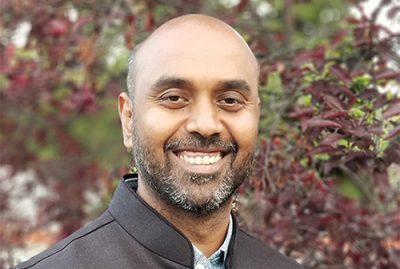
by Linda Costa
IMS Written Communications Assistant
Dr. Avinash Dongare, a resident member of the University of Connecticut’s Institute of Materials Science (IMS) has been elected Fellow of the American Society of Mechanical Engineers (ASME). Dr. Raj Rajendran, Chair of the Executive Materials Division of ASME, surprised Dongare with the nomination.
Dr. Rajendran has known Avinash since 2007 when they met while Dr. Rajendran was serving as Chief Scientist for the Engineering Directorate at the U.S. Army Research Office. During that time, Dongare was serving as Rajendran’s National Research Council (NRC) Fellow, working on modeling the response of complex molecules and single crystals under shock (high pressure and high strain rate) loading conditions.
“It is clear that Dr. Dongare stands among the most outstanding researchers of his generation,” Dr. Rajendran said of his decision to nominate Dongare. “I am confident his innovative research will continue to earn him well-deserved recognition and accolades from his peers.”
Rajendran also noted Dongare’s dedication to the field, noting that he actively serves the scientific community through his roles with ASME and as a reviewer for several leading journals in his area of expertise.
“His service and leadership underscore his commitment to advancing science and supporting the work of his colleagues,” Dr. Rajendran commented.
Dr. Dongare’s current research involves the development and application of advanced computational methods to investigate the behavior and properties of novel materials across multiple scales.
ASME is a nonprofit organization founded in 1880 to help the engineering community develop solutions to numerous challenges.








